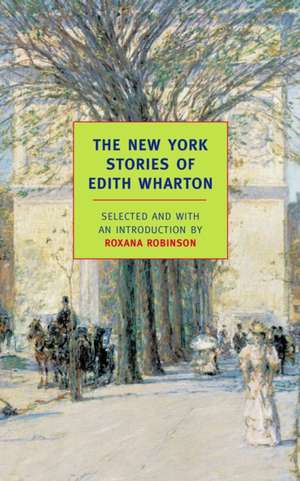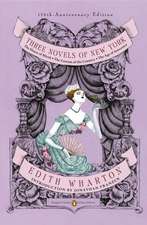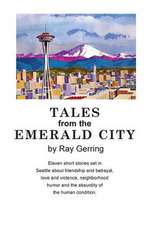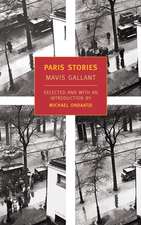The New York Stories of Edith Wharton
Autor Edith Wharton Roxana Robinsonen Limba Engleză Paperback – 30 sep 2007
Edith Wharton wrote about New York as only a native can. Her Manhattan is a city of well-appointed drawing rooms, hansoms and broughams, all-night cotillions, and resplendent Fifth Avenue flats. Bishops’ nieces mingle with bachelor industrialists; respectable wives turn into excellent mistresses. All are governed by a code of behavior as rigid as it is precarious. What fascinates Wharton are the points of weakness in the structure of Old New York: the artists and writers at its fringes, the free-love advocates testing its limits, widows and divorcées struggling to hold their own.
The New York Stories of Edith Wharton gathers twenty stories of the city, written over the course of Wharton’s career. From her first published story, “Mrs. Manstey’s View,” to one of her last and most celebrated, “Roman Fever,” this new collection charts the growth of an American master and enriches our understanding of the central themes of her work, among them the meaning of marriage, the struggle for artistic integrity, the bonds between parent and child, and the plight of the aged.
Illuminated by Roxana Robinson’s Introduction, these stories showcase Wharton’s astonishing insight into the turbulent inner lives of the men and women caught up in a rapidly changing society.
Preț: 109.40 lei
Nou
Puncte Express: 164
Preț estimativ în valută:
20.93€ • 21.91$ • 17.32£
20.93€ • 21.91$ • 17.32£
Carte disponibilă
Livrare economică 15-29 martie
Livrare express 01-07 martie pentru 30.54 lei
Preluare comenzi: 021 569.72.76
Specificații
ISBN-13: 9781590172483
ISBN-10: 1590172485
Pagini: 452
Dimensiuni: 127 x 203 x 25 mm
Greutate: 0.5 kg
Editura: NEW YORK REVIEW OF BOOKS
Locul publicării:United States
ISBN-10: 1590172485
Pagini: 452
Dimensiuni: 127 x 203 x 25 mm
Greutate: 0.5 kg
Editura: NEW YORK REVIEW OF BOOKS
Locul publicării:United States
Notă biografică
Edith Wharton (1862—1937) published more than forty volumes of novels, short stories, verse, essays, travel books, and memoirs. She was born into a distinguished New York family and was educated privately in the United States and abroad. Among her best-known work is Ethan Frome, The House of Mirth, and The Age of Innocence, for which she was awarded the Pulitzer Prize.
Roxana Robinson is the author of the three novels Sweetwater, (2003) This Is My Daughter, (1998) and Summer Light (1988); the three short story collections A Perfect Stranger, (2005) Asking for Love, (1996) A Glimpse of Scarlet, (1991) and the biography Georgia O’Keeffe: A Life, (1989). Four of these were named Notable Books of the Year by The New York Times. She has received fellowships from the NEA, the MacDowell Colony, and the Guggenheim Foundation. Robinson's fiction has appeared in Best American Short Stories, The Atlantic, The New Yorker, Harper's and Vogue. She lives in New York City and Westchester County, New York.
Roxana Robinson is the author of the three novels Sweetwater, (2003) This Is My Daughter, (1998) and Summer Light (1988); the three short story collections A Perfect Stranger, (2005) Asking for Love, (1996) A Glimpse of Scarlet, (1991) and the biography Georgia O’Keeffe: A Life, (1989). Four of these were named Notable Books of the Year by The New York Times. She has received fellowships from the NEA, the MacDowell Colony, and the Guggenheim Foundation. Robinson's fiction has appeared in Best American Short Stories, The Atlantic, The New Yorker, Harper's and Vogue. She lives in New York City and Westchester County, New York.
Recenzii
"If these stories have a defining subject (other than New York) it is divorce, which begins to replace art as Wharton's excuse for discussing the fashionable and the real. In fact, one of the pleasures of a collection like this is that you can trace her tendencies in it? and the way they develop." --Time Literary Supplement
“Edith Wharton, whose deft portraits of the upper class are taken as definitive accounts of the late 19th century, remains one of the most potent names in the literature of New York.” –The New York Times (Christopher Gray)
“Wharton was Old New York…[her family] belonged to that tiny but powerful New York clan…who clung together, intermarried, set the tone and made the rules for society in Manhattan…Her New York fiction spans the years from, roughly, 1840 through the turn of the century–from before her birth, in other words, through the Civil War and beyond into the Gilded Age, an era of tremendous transformation in American society.” –The New York Times (Charles McGrath)
“Yet for all her reservations about New York, Wharton still visited and…she continued to set most of her books and stories here–in a remembered New York and what she imagined to be the New York of her parents and grandparents. The city became for her a social topography and a deep vein to be mined, both a real place and a symbolic landscape.” –The New York Times (Charles McGrath)
“Mrs. Wharton had her turf, that almost sepia New York, to be turned over and over again, like setting the plow to the family farm every spring.” –The New York Review of Books (Elizabeth Hardwick)
“New York City [is] the setting of Wharton’s finest fictions.” –The New York Observer
“Edith Wharton, whose deft portraits of the upper class are taken as definitive accounts of the late 19th century, remains one of the most potent names in the literature of New York.” –The New York Times (Christopher Gray)
“Wharton was Old New York…[her family] belonged to that tiny but powerful New York clan…who clung together, intermarried, set the tone and made the rules for society in Manhattan…Her New York fiction spans the years from, roughly, 1840 through the turn of the century–from before her birth, in other words, through the Civil War and beyond into the Gilded Age, an era of tremendous transformation in American society.” –The New York Times (Charles McGrath)
“Yet for all her reservations about New York, Wharton still visited and…she continued to set most of her books and stories here–in a remembered New York and what she imagined to be the New York of her parents and grandparents. The city became for her a social topography and a deep vein to be mined, both a real place and a symbolic landscape.” –The New York Times (Charles McGrath)
“Mrs. Wharton had her turf, that almost sepia New York, to be turned over and over again, like setting the plow to the family farm every spring.” –The New York Review of Books (Elizabeth Hardwick)
“New York City [is] the setting of Wharton’s finest fictions.” –The New York Observer
Cuprins
TABLE OF CONTENTS
Mrs. Manstey's View
The Good May Come
The Portrait
A Cup of Cold Water
A Journey
The Rembrandt
The Other Two
The Quicksand
The Dilettante
The Reckoning
Expiation
The Pot-Boiler
His Father's Son
Full Circle
Autres Temps . . .
The Long Run
After Holbein
Diagnosis
Pomegranate Seed
Roman Fever
Mrs. Manstey's View
The Good May Come
The Portrait
A Cup of Cold Water
A Journey
The Rembrandt
The Other Two
The Quicksand
The Dilettante
The Reckoning
Expiation
The Pot-Boiler
His Father's Son
Full Circle
Autres Temps . . .
The Long Run
After Holbein
Diagnosis
Pomegranate Seed
Roman Fever
















